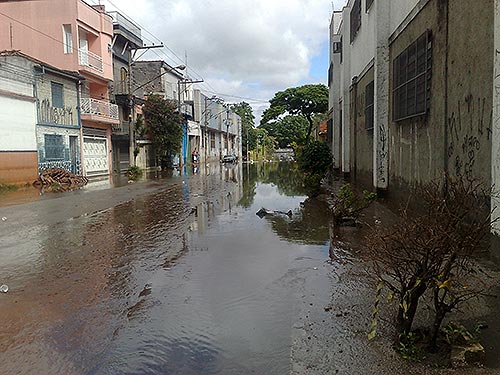 |
| Flooded street in Bom Retiro, a neighborhood in São Paulo with a large presence of immigrants since the end of the 19th century and always considered of poor health |
Bom Retiro, a neighborhood near the center of São Paulo, is considered a region where it is possible to live and work to achieve a better life. On the other hand, it has always been seen as a place with poor health, according to historian Jeffrey Lesser (Emory University), who will give the conference Life and Death in the 'Worst' Neighborhood of São Paulo on August 5, at 2:00 pm.
A visiting professor at the IEA since 2015 and a member of the Institute's Intercultural Dialogues Research Group, Lesser will analyze the relationship between public health (as well as a series of formal policies reinforced by trained actors) and the "public's health" (how residents of the neighborhood understand their own health conditions). The reference information have been obtained by a project that analyzes data of a neighborhood's block from the 1880s until today.
This study is developed by the Lesser Research Collective, which uses archival and observational methods to analyze the practices of residents and health professionals, and the stories they tell about what happens during the residents' course of life and death regarding health.
The conference will be broadcast live on IEA's website.
The neighborhood
With a strong connection to the working class since the 19th century, Bom Retiro has become a textile pole in the last decades. Its history is marked by the presence of immigrants (from other countries and regions of Brazil) and descendants of slaves.
While the cultural background of the neighborhood was influenced by Italian, Spanish, and Portuguese catholic immigrants at the end of the 19th century, this mosaic changed with the large presence of East-European jews and christians from South Korea, Paraguay, and Bolivia in the late 20th century.
"However, even though the place is still considered a 'neighborhood of immigrants,' this is not demographically correct, since most of the residents have always been Brazilians," says Lesser.
